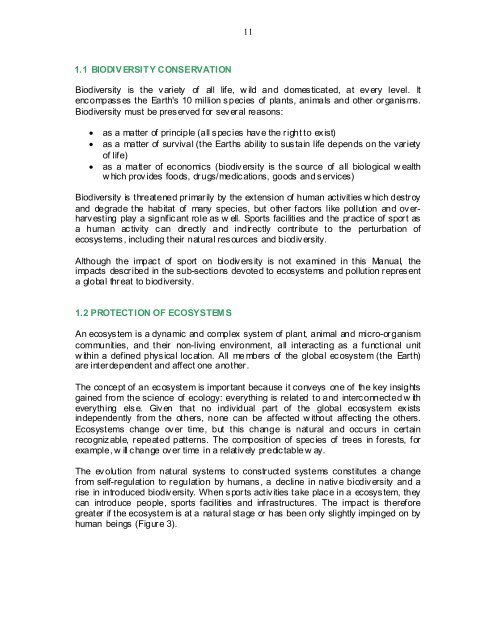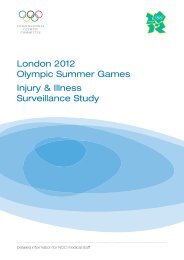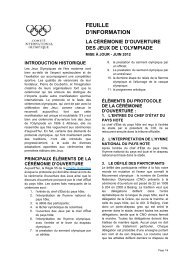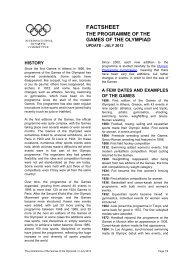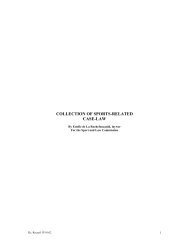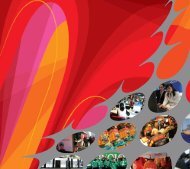MANUAL SPORT ENVIRONMENT
MANUAL SPORT ENVIRONMENT
MANUAL SPORT ENVIRONMENT
Create successful ePaper yourself
Turn your PDF publications into a flip-book with our unique Google optimized e-Paper software.
1.1 BIODIVERSITY CONSERVATION<br />
11<br />
Biodiversity is the v ariety of all life, w ild and domes ticated, at ev ery level. It<br />
enc ompass es the Earth's 10 million s pecies of plants, animals and other organis ms.<br />
Biodiversity must be pres erved for sev eral reasons:<br />
• as a matter of principle (all s pec ies hav e the right to ex ist)<br />
• as a matter of survival (the Earths ability to sus tain life depends on the variety<br />
of life)<br />
• as a matter of ec onomics (biodiv ersity is the s ource of all biological w ealth<br />
w hich prov ides foods, drugs/medic ations, goods and s ervices)<br />
Biodiversity is threatened primarily by the extension of human activities w hich destroy<br />
and degrade the habitat of many species, but other factors like pollution and ov erharv<br />
esting play a signific ant role as w ell. Sports facilities and the practice of sport as<br />
a human ac tivity c an directly and indirectly contribute to the perturbation of<br />
ecosys tems , including their natural res ources and biodiv ersity.<br />
Although the impac t of sport on biodiv ers ity is not examined in this Manual, the<br />
impacts described in the sub-sections devoted to ecosystems and pollution represent<br />
a global threat to biodiversity.<br />
1.2 PROTECTION OF ECOSYSTEMS<br />
An ecosys tem is a dynamic and complex system of plant, animal and micro-organism<br />
communities, and their non-living environment, all interacting as a functional unit<br />
w ithin a defined phys ical loc ation. All me mbers of the global ec osystem (the Earth)<br />
are interdependent and affect one another.<br />
The concept of an ec osystem is important because it conveys one of the key insights<br />
gained from the science of ecology: everything is related to and interc onnected w ith<br />
everything else. Given that no individual part of the global ecosystem exists<br />
independently from the others, none can be affected w ithout affecting the others.<br />
Ecosystems change ov er time, but this change is natural and occ urs in certain<br />
recogniz able, repeated patterns. The composition of spec ies of trees in forests, for<br />
example, w il change over time in a relatively predictable w ay.<br />
The evolution from natural systems to constructed systems constitutes a change<br />
from self-regulation to regulation by humans , a decline in nativ e biodiv ersity and a<br />
rise in introduced biodiv ersity. When s ports activ ities take plac e in a ecosys tem, they<br />
can introduce people, sports facilities and infrastructures. The impact is therefore<br />
greater if the ecosystem is at a natural stage or has been only slightly impinged on by<br />
human beings (Figure 3).


